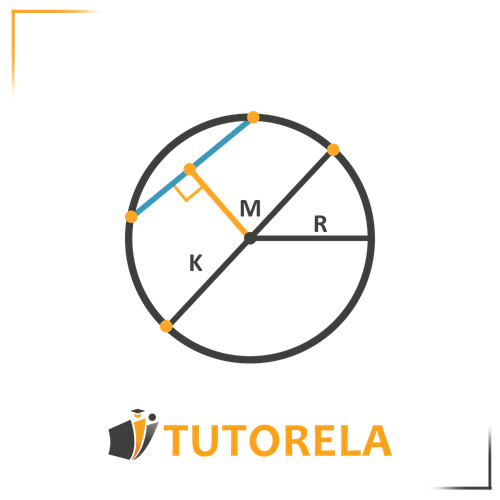The radius is the distance from the center point of the circle to any point on its circumference, it is denoted by and it equals half the diameter.
Parts of a Circle Practice Problems with Solutions
Master circle geometry with practice problems on radius, diameter, circumference, and area. Step-by-step solutions included for complete understanding.
- Calculate radius and diameter using the relationship between these measurements
- Apply circumference formulas using both radius and diameter methods
- Solve area problems using the pi × r² formula with step-by-step guidance
- Identify perpendicular properties and their effects on chords and arcs
- Work with pi (3.14) in real-world circle measurement problems
- Practice converting between different circle measurements and units
Understanding Parts of the Circle
Parts of a Circle
Circle radius
The diameter of the circle
The diameter is a straight line that passes through the center point of the circle and connects points on the circumference. The diameter equals twice the radius.
Pi
Pi is a constant number that represents the ratio between a circle's circumference and its diameter.
Its symbol is and it is always equal to .
perpendicular
A perpendicular is a straight line that extends from the center of the circle to any chord in the circle, divides the chord into equal parts, creates right angles with the chord, and bisects the arc corresponding to the chord.

- center of the circle
- radius of the circle
- diameter of the circle
Blue line - chord
Orange line - perpendicular
Practice Parts of the Circle
True or false:
The radius of a circle is the chord.
Examples with solutions for Parts of the Circle
There are only 4 radii in a circle.
A radius is a straight line that connects the center of the circle with a point on the circle itself.
Therefore, the answer is incorrect, as there are infinite radii.
Answer:
False
If the radius of a circle is 5 cm, then the length of the diameter is 10 cm.
To determine if the statement "If the radius of a circle is 5 cm, then the length of the diameter is 10 cm" is true, we need to use the relationship between the radius and diameter of a circle.
The diameter of a circle is calculated using the formula:
where is the radius. In this problem, the radius is given as 5 cm.
Using the formula, the diameter is:
This matches exactly the length of the diameter given in the problem.
Therefore, the statement "If the radius of a circle is 5 cm, then the length of the diameter is 10 cm" is True.
Answer:
True
Which figure shows the radius of a circle?
It is a straight line connecting the center of the circle to a point located on the circle itself.
Therefore, the diagram that fits the definition is c.
In diagram a, the line does not pass through the center, and in diagram b, it is a diameter.
Answer:
Which diagram shows a circle with a point marked in the circle and not on the circle?
The interpretation of "in a circle" is inside the circle.
In diagrams (a) and (d) the point is on the circle, while in diagram (c) the point is outside of the circle.
Answer:
The number Pi represents the relationship between which parts of the circle?
To solve this problem, we will clarify the relationship between the constant and parts of a circle.
The number is a constant that relates the circumference of a circle (the perimeter) to its diameter. The formula for the circumference of a circle is given by:
where is the circumference, and is the diameter of the circle. This equation shows that is the ratio of the circumference of a circle to its diameter, which remains constant for all circles.
Therefore, indeed represents the relationship between the circle’s perimeter and its diameter.
Thus, the correct answer is: Perimeter and diameter
Answer:
Perimeter and diameter